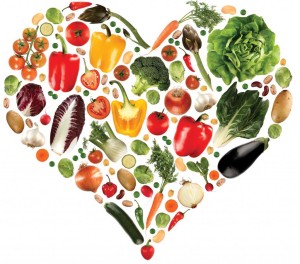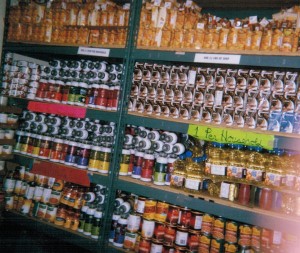This was almost the last weekend.

There’s only one more weekend left at Mower’s Meadow Flea Market this year. I’ll be there the Saturday and Sunday after Thanksgiving and then that’ll be it for awhile. I understand the flea market doesn’t open weekends again until May.
Don’t quote me on that. I’m not sure. But, one thing I’m sure about: I plan to be there every weekend next season. The hunger book, the donation jar, and I plan to be at Mower’s Meadow Flea Market next season.
I was at a different spot at the flea market every weekend. And, I really enjoyed being there. The people at the other booths were friendly, open, and interested in my booth. I got many tips and tried them all. It was obvious to everyone that I really didn’t know much about flea market marketing. I still don’t know much but my booth presentation has definitely improved.
Thank you to each and every one who bought copies of “I Don’t Hang Out in Churches Anymore”. I doubt if “The Ketchup Sandwich Chronicles” will be available by then but I working on it every day.
The title “I Don’t Hang Out in Churches Anymore” was named by Cullen Thomas and it was well chosen. Many people who picked up the book on the table were bothered by the title because they didn’t understand it. However, it definitely attracted attention.
For those with questions, the title referred to an “unhoused” congregation serving people outside the sanctuary. And, the food pantry was definitely outside the boundary of the sanctuary. The food pantry was, in fact, in the basement.
This story isn’t about how to fix or save or change a church. Nor is it, really, a story about a church at all. In fact, it’s not a manual about anything. It’s a story about how I discovered hungry people in the basement of the building in a tiny food pantry in the corner room.
A memoir, this story tells the truth as I remember it.
If you haven’t had a chance to read this book, it’ll be available at thurmangreco.com during the winter unless I find an indoor weekend flea market that’s appropriate for a table of books and open on the weekend.
My goal is to offer Reiki therapy and tarot readings in addition to the books at the flea market in the future.
But, whether I offer Reiki and tarot or not, I plan to be at a table selling both “I Don’t Hang Out in Churches Anymore” and “Healer’s Handbook”. When “Ketchup Sandwich Chronicles” comes out, I’ll add it to the stack!
See you there!
Thurman Greco
Please refer this article to your preferred social media network.

I Don’t Hang Out in Churches Anymore!
 It’s OUT! It’s in print! The story has been told! And, you can get a copy. Today! Right now!
It’s OUT! It’s in print! The story has been told! And, you can get a copy. Today! Right now!
Simply go to thurmangreco.com and order it on paypal.
If you prefer, you can wait until next Wednesday, and get it on Amazon.
And, it’s beginning to appear in independent book stores.
What began as a project, guaranteed not to take no more than two hours a month has become a calling. And, as of this week, it’s become a non-profit seeking food and funds to feed the hungry.
It took more than five years of work. Reams and Reams of paper were used. Two computers blew up. One copier died of exhaustion.
Get the book, read it, and let me know how you feel about what you read.
And, please share this unbelievably exciting news.
And, watch for the T-shirts!
I’ve got a food drive going now. Please donate peanut butter. Locally, you can donate food, at 31 Tannery Brook, Woodstock.
Any and all food and funds you donate will go to a food pantry. You can send a check to Thurman Greco, 31 Tannery Brook, Woodstock, NY 12498. OR, you can make a donation via paypal. You can get to the paypal site by going to http://www.thurmangreco.com.
OR, you can give something directly to your local food pantry!
And, thank you in advance for understanding the situation and for sharing what you can with those who have less than you.
Help me FEED THE HUNGRY!
Peace and food for all.
Please share this article with your favorite social media outlet.
THANKS!
Thurman Greco

A Holiday Gone Wrong
“When we talk cooking and eating, we are talking love, since the entire history of how a family loves – when and how they learned to love – can be told in most kitchens.” – Marion Roach Smith
The first year a person uses a food pantry for primary shopping, Christmas is a holiday gone wrong. After several years, Christmas becomes whatever the household can make of it. The adjustment is, for some, difficult and for others more difficult.
The difficulty lies, mostly, in the ability to get food items considered “traditional” by a household when no money is available to purchase them in a grocery store.
Once, I heard some pantry shoppers talking in the line about holidays past. Their conversation centered around people celebrating by eating too much delicious food and visiting with relatives, friends, neighbors while swapping stories, catching up on the news.
For more and more people living in poverty, this just doesn’t happen. Both households and individuals find themselves unable to finance the expense of the holiday event.
Not only can they not afford the food, more and more people no longer have the table to sit at, the chairs to sit on, and the stove to cook the food. Recipes, pots and pans, china, silverware, crystal are long since gone. Eating without a kitchen is the way of the modern household living on a minimum wage.
With luck, today’s struggling class household will have the gas to get the car to a soup kitchen. Otherwise, it’s going to be a regular day with a meal prepared in a crock pot, or on a hot plate. The economic situation for some is that just to take the day off and still be able to buy groceries the next day is more a goal than anything else.
Realities faced by the hungry pantry shopper weigh on my shoulders every day of the year. This weight keeps me squirreling away food so the pantry shelves can be stocked for celebrations with canned soup, canned gravy, potatoes, stuffing mix, canned green beans, cranberry sauce, chicken broth and all the fruits and vegetables that can be gotten at food drives and the food bank. Storeroom space and a few freezers at the food pantry are essential.
Pantry volunteers have a difficult time just keeping up with the ever increasing client census. Those with a stable shopper base, a large storeroom and connections can begin scrounging in July to set aside food. It’s extremely challenging to get several hundred or a thousand of an item in the summer and store the food until December.
After several years and several holidays, the food gatherer in the household becomes, if time allows, more skilled at scrounging for food in both the pantry and the grocery store. The difficulty lies, mostly, in the ability to get food items considered “traditional” by a household when no money is available to purchase the items in a supermarket.
While distributing food, I mentally predict who’s going to be successful at scrounging and gathering by the sound of the automobile as it’s driven into the parking lot of the pantry. A successful holiday dinner depends on a working automobile, time available between jobs, and the energy to sustain the search.
Transportation challenges, disabilities, and serious illness in the family can defeat all efforts.
Thank you for reading this article.
Please share this story with your preferred social media network.
Thurman Greco
Woodstock, NY
Book Update: “A Healer’s Handbook” has been published and is available on Nook and Kindle! It will be available in the paper version in early January. If you order it now, it will be mailed directly to you upon publication.
More information about this book can be found on Thurmangreco.com.
Publication of “The Unworthy Hungry” is now scheduled for January 2018.
Thank you for your support and your patience. Now that “Healer’s Handbook” has been published, there will be more frequent and regularly published articles on all blogs.
Thanks Again
Voices not Heard in the Hallway
We’re having a white Christmas in Woodstock. The tree is up on the village green!
Voices can be heard in the hallway, just like all year long.
Except:
One thing no one ever discusses in the hallway of the pantry is the past. The shoppers speak about things that happened in the past week or so but never much beyond. Whatever took place before the food pantry came into their lives just isn’t on the agenda.
As holidays approach, no one ever mentions the Thanksgivings, Christmases, Hanukkahs, Passovers, Easters they had before their lives spun out of control. No one ever mentions that there wasn’t enough money to get Passover food which isn’t available in our pantry.
No one ever asks a child what Santa is going to bring.
Thank you for reading this blog.
Please refer this article to your preferred social media network.
One thing: the reflexology book, “A Healers Handbook” by me, Thurman Greco, is finished! It will soon be available for purchase and can be bought now in the ebook version at Kindle and Nook. For you, the reader of this blog, this means that I’ll be posting much more often now.
Thurman Greco
Ho Hum – Just Another Miracle
No question about it, miracles do happen. Maybe you don’t believe in miracles. I do. I was in denial for the longest time. But, after awhile, I had to face reality. There were simply too many coincidences:
One September pantry day a few years ago the lines were longer than usual and the shelves were emptying out fast. “I think we’re going to run out of food” I mentioned under my breath to Marie Duane, a volunteer from St. Gregory’s Episcopal Church.
“Do we have a plan for this kind of event?” I asked myself.
Then, to quote the Reverend Mike Huckabee, “God showed up.”
I know this statement is applicable here because the moment I began muttering under my breath, it was as if someone had blown a whistle. A red haired woman drove up in a tan SUV filled with bags and bags of food she collected from Congregation Agudas Achim in Kingston. Harriet Kazansky unloaded enough canned and boxed food to get us through the day with some food left over!
One December, the Wednesday after Christmas, to be exact, John Mower drove up with a car trunk filled with canned vegetables for the pantry. What a gift! Our pantry was completely bare that December. Then, the next day, along came another trunk load. He finally quit after three trips to the pantry. He filled the shelves for the next pantry day.
One Tuesday morning in the pantry, Peggy Johnson was upset because she didn’t have enough food to prepare the take out bags for the fourteen families she delivered food to every week. Food had been scarce and this week the take out area seemed empty. A large man suddenly walked in the door carrying an extremely large box filled with canned and boxed food. A Kingston fireman who grew up in the Woodstock area, he made Peggy promise to never reveal his name. However, she didn’t have to keep his gift a secret: in one trip down the pantry hallway, carrying a box large enough to hold everything needed, he single handedly provided all the food for the home bound families that week. Our pantry has never heard from him since.
In the pantry hallway, we had an Item of Dignity closet. where shoppers could take a roll of toilet paper and one other item each time they shopped. We were forbidden by the building committee to have clothing in this closet.
One Wednesday afternoon I noticed a pair of new boots. I have no idea where they came from. They certainly didn’t come in disguised as deodorant or shampoo. Anyway, Prasida needed a pair of winter boots. One of the volunteers took them off the shelf.
“Prasida, can you wear wear these boots?” Prasida came over to the closet, looked them over, and put them on.
“Ahhh – a perfect fit! Thank you Amma! Now I won’t have cold feet this winter in my summer sandals.”
At one point, I was reading Doreen Virtue’s book “Archangels and Ascended Masters”. One night I read about Saint Therese, also known as the Little Flower. The story goes that if one prays to St. Therese, she will send a rose as a sign that the request has been heard. The next day, I found a rose on the pantry floor as I walked into the room.
But, the real miracle happened repeatedly in the pantry as the shoppers and volunteers both began to heal and change and grow from the community, their commitment, and the experiences in the pantry. When people first started coming to the pantry, either to volunteer or shop, they were focused inward on their own problems, issues, health. After a short time, they began to focus on their friends in the pantry. They became concerned about something bigger than themselves and their private struggles.
In short…they became new.
Thanks for reading this blog/book. The stories are true. The people are real.
Please share this article with your preferred social network.
The book is still in progress! It’s going to happen!
Making the Most of What You Get at the Food Pantry
More and more pantries offer fresh vegetables and fruits. A challenge sometimes is making it last when it gets to your kitchen. Following are a few tips to help keep the food better. Even though it’s only going to be around for a day or two before you eat it, you want it to look its best, taste its best, and have the most nutrients possible.
FRESH FRUITS AND VEGETABLES
Store LETTUCE, SALAD GREENS, and MUSHROOMS in a refrigerator on the middle or lower shelf away from fans because these items freeze quickly.
CUCUMBERS suffer from chill damage. You’ll have better luck with them if you store them on an upper shelf or on the door of the refrigerator.
CITRUS FRUITS release ethylene gas so it’s best to separate CITRUS FRUITS, MELONS AND APPLES away from delicate foods such as LETTUCE.
Some fruits and vegetables should not be refrigerated: BANANAS, GRAPEFRUITS, LEMONS, LIMES, MANGOES, MELONS, ORANGES, PAPAYAS, POTATOES, ONIONS, TOMATOES, AND AVOCADOS all do better when stored on a counter top.
Ripening some fruits on a counter top is best: AVOCADOS, KIWI FRUIT, NECTARINES, PEACHES, PEARS, AND PLUMS. After these foods are ripe, you may choose to put them in the refrigerator.
Fruits to store in the refrigerator include: APPLES, APRICOTS, BLACKBERRIES, BLUEBERRIES, CHERRIES, CUT FRUITS, FIGS, GRAPES, ASIAN PEARS, RASPBERRIES, STRAWBERRIES
Vegetables to store in the refrigerator include: ASPARAGUS, GREEN BEANS, LIMA BEANS, BEETS, BROCCOLI, BRUSSELS SPROUTS, CABBAGE, CARROTS, CAULIFLOWER, CELERY, COLLARD GREENS, CUT VEGETABLES, ESCAROLE, GREENS, GREEN ONIONS, LEAFY VEGETABLES, LEEKS, LETTUCE, MUSHROOMS, PEAS, RADISHES, SPINACH, SUMMER SQUASHES, AND SWEET CORN.
POULTRY
When working with poultry, the wrapping should be completely unbroken with no punctures.
Raw poultry should have a fresh smell with no odor. It should be firm to the touch. It should not be sticky. There should be no discoloration. The internal temperature of raw poultry should be lower than 40F degrees.
Poultry should be stored separately from all other foods. It should be kept on the lowest shelf in the refrigerator to prevent contamination from dripping.
Anything that comes in contact with poultry or its juices should be cleaned and sanitized immediately.
Frozen poultry should have no soft spots.
Partially thawed poultry should be used immediately.
Poultry cannot be kept at room temperature for more than two hours.
Wash hands immediately after handling poultry.
MILK
Milk stays fresh up to six days past the sell-by date. Frozen milk can be stored longer.
If milk sours, use it in a baking recipe calling for buttermilk.
Sour milk is not unsafe to drink.
CULTURED PRODUCTS
COTTAGE CHEESE, YOGURT, SOUR CREAM, AND CREAM CHEESE are considered to be cultured products with a longer shelf life than milk. If the container is open, cultured products can be used up to six weeks past the sell-by date.
http://www.allianceforpositivehealth.org
Thank you for reading this book/blog.
Please share this article on your preferred social media network.
Please send a comment.
Peace and food for all.
Thurman Greco
Libraries – and the Hungry
“Hunger and income inequality is probably the single biggest issue facing this country.” – Susan Zimet
LIBRARIES ARE EXTREMELY IMPORTANT TO A TOWN, TO A COUNTRY.
Libraries are equal opportunity events offering information, learning, culture for any and all who enter. They also offer an opportunity to get in out of the rain, snow, heat. As far as I can tell, it’s easier to get into a library than it is to get into a lot of pantries.
For one thing, I don’t think you have to prove where you live to get into a library. There may be libraries out there that require proof of address, and other identification but I don’t know about them. (If you know of a library requiring identification or proof of residency to enter, please let me know. I don’t want to be wrong about that.)
Libraries are important to a community. The most important thing I carry in my wallet is my Woodstock Free Library Card. I never have to show it to anyone to use the library. I just walk in the door and all this wonder, this knowledge, this information is available to me…for nothing. But, for some reason, I feel that it’s important to carry it.
At the Woodstock Free Library, a person can even take his/her dog if it’s on a leash.
As soon as I walk in the door, I see the computers. And, of course, they are available to everyone. These computers are sooo important to those of us who are in a situation where there are only funds for rent and gas. For those in the “broke” category, a computer is out of the question.
For those in the homeless category, library computers are even more important because they are a homeless person’s ticket to communication with the outside world…especially offices such as Department of Social Services, Office of the Aging. For a homeless person seeking shelter, they are invaluable. For a housed person seeking a larger or less expensive apartment, they are necessary. A job seeker cannot get hired these days without access to a computer.
We can all get an email address quickly and cheaply at Gmail.
I’ve been connecting with area libraries recently to book a series of speeches I’ll be giving this year. Libraries in communities all around Woodstock are in such wonderful condition. They are right in town in beautiful buildings. Ample parking is available. The libraries are open for extended hours.
They have bathrooms – a luxury that we all need.
I mention these things in a blog about hunger and food pantries because, in a perfect world, I would have a library and a pantry in the same building. It only makes sense really. After all, all the people I see in the pantry are also all the people I see in the library.
Thanks for reading this blog.
Please refer this article to your preferred social media network.
Don’t forget to join the email list.
Thurman Greco
Walmart and the Minimum Wage

As the country’s largest employer, Walmart gets criticized for many “wrongs” not exclusive to itself.
Although retailers throughout our country only pay minimum wages, people act like Walmart is the only one. They pretend the other retailers pay over $10 per hour and include wonderful benefits like health care and retirement.
Wrong!
Most retailers pay what Walmart pays – maybe even a little less. In our own Woodstock area, retailers not only pay less, they often pay their sales employees off the books.
So, the recent news of Walmart and the minimum wage hourly rate increases to $9 per hour is an excuse to celebrate, if nothing else. Walmart is a trendsetter! Hopefully this move will motivate other retailers to do the same.
Those of us who work in pantries fantasize we’ll have fewer people in our lines. In some locales, I’m sure that may be true.
However, I harbor no fantasies. For one thing, the people in our pantry line are mostly senior citizens too old to work. For another, those young enough to hold down jobs work for companies who aren’t going to raise the wages.
Over the past few decades, we’ve created a food system for the poor. The more affluent in our country shop in super markets. Everyone else shops at the convenience store, pharmacy grocery aisle, the food pantry.
Because of the situation created in recent years by food deserts, the underemployed or unemployed poor struggle to get enough food to eat while also trying to get the right kinds of nutritious foods needed to stay healthy.
Over the years, food manufacturers, farmers, grocers, corporations, foundations, individuals, and the government work together to provide surplus food to feed those in need.
The goal: give food assistance to the hungry.
Since 2006, the need for emergency food has morphed into an ongoing need for food for people from all walks of life.
The new paradigm is to feed them nutritious food regularly because these people can no longer buy the food to feed themselves.
Many find themselves in this position for the first time in their lives. There are now men, women, and children needing assistance to alleviate hunger in every county in every state in the union, as well as the District of Columbia.
High unemployment/underemployment, increasing housing costs, rising poverty, the rising cost of fuel to heat apartments and homes, increasing transportation costs, and the escalating cost of food make emergency food assistance become supplemental food assistance.
Financial safety nets disappear as congress repeatedly cuts benefits.
Today’s pervasive hunger undermines our communities, schools, work force, and national security.
When people don’t have enough food to eat today, it’s impossible to plan for tomorrow. People with enough to eat work better and learn better. They can build a better life for themselves and their families.
This is what Walmart raising the minimum wage is all about.
Raising the minimum wage a few cents or dollars is not about solving the problems of poverty. It’s about feeding the hungry.
Thank you Walmart, and every other employer in our country who pays workers a living wage. You are to be commended. Hopefully this will start a trend toward employers everywhere paying living wages to workers.
Thanks for reading this blog/book.
Please send this article to your preferred social media network.
I hope you found this article helpful. Please leave your comments below and check out our other posts.
Don’t forget to join the email list.
Peace and food for all.
Thurman Greco
SNAP and Seniors: Many just don’t get it.

Please share this post with any and all seniors you may know. Chances are they might be able to use the information…especially since 1 senior in 7 in our country doesn’t get enough to eat.
Seniors are extremely reluctant to use SNAP, partly because of myths surrounding SNAP.
SNAP Myth #1:
Why apply for SNAP? It’s not worth the hassle. I may not even get much $$$.
SNAP Reality #1:
Most people get more than just a few dollars. Some families receive over $100. But, whatever you get – it all adds up, Over time, you’re going to receive several hundred dollars annually. This $ is yours.
Whether it’s $16 or $160 is not the issue here. This is $$$ that you paid taxes with all these years.
Look at it this way: If you get $16 in SNAP benefits, you can buy eggs, milk, bread, butter. Every penny counts.
Whatever the amount, you are going to be eating better – staying healthier – and using tax dollars that you paid all these years.
SNAP Myth #2:
If I get SNAP, I’ll be taking away food benefits from others who may need them more such as young families with children.
SNAP Reality #2:
There are funds set aside for everyone who qualifies. The funds are federal. No one participating in the SNAP program will be taking away anything from anyone. On the contrary, by using SNAP funds, you will be bringing dollars into your community. You will be helping your town.
Many seniors qualify for SNAP and are not even aware of this benefit.
SNAP Myth #3:
I’ll have to have a face-to-face interview to get on the SNAP roster.
SNAP Reality #3:
Any senior who is ill, has transportation difficulties, has hardships due to living in a rural area, is experiencing prolonged severe weather, or is under the care of another household member does not need to have a face-to-face interview.
In New York State, seniors can be interviewed by phone or with a scheduled home visit.
Basically, the issue here is trust. Seniors sometimes do not trust the process and are afraid of it. Filling out the application can be very challenging for those of us who have cognitive or physical limitations.
A further barrier is language. Many seniors simply do not have the English language skills to apply for SNAP – and they know it. There is another category here: the senior who feels s/he lacks the skills and does not realize that there are professionals who speak the language who can help with the application process.
AND FINALLY
Hunger among seniors is at an epidemic level…especially in New York State. SNAP offers access to a healthy diet which is extremely important for the overall health of seniors.
Thank you for reading this blog/book.
Please refer this article to your preferred social media network.
I hope you found this helpful. Please leave your comments below and check out other posts.
Don’t forget to join the email list.
Peace and food for all.
Thurman Greco












